|
|  |
An apology: |
I began researching the Chevrolet “stovebolt” L6 engine over 20 years ago for a personal project, which was never completed. The extensive notes I made for what was originally intended to be a comprehensive booklet were never fully collated, synchronized, or put in some order of logic, in some cases the same subject is discussed in more than one section.
It’s not going to be finished as I wanted it to be, but in my opinion there is much useful data, advice, ideas, comparisons, and explanations that will be extremely helpful to a stovebolt builder. |
 |
|
This is my complete and comprehensive master work on obtaining the best speed & performance from your Chevrolet 1954-62 (full-pressure oil) 235” & 1954-63 261” in-line six cylinder (L6) engines (as well as the older 216” and splash-oiled 235”, although in less detail).
I have invested literally thousands of hours in research, comparisons, examining, taking measurements, &c. over a period of more than 10 years.
Your “obsolete” stovebolt is capable of surprising speed & power, without loss of reliability. It’s the most complete literature you can buy to get the best results from your engine. Before making any decisions about modifying (or even rebuilding) your motor, get the best help available, and do it right the first time.
This is not just a re-print of the firing order, options, number of cylinders, serial numbers, casting numbers, rated power, compression ratio, &c. It contains only information that is useful and relevant (no pictures of chrome accessories).
Rather than merely summarize and repeat what you’ve already read by “California Bill” Fisher, Frank McGurk, Racer Brown, and Roger Huntington (which were written 60 years ago), my purpose is explore, explain and detail modification, fine tuning, improvements and modernization using current parts and technology. Use it with your service manual for best results. Not an expert mechanic? You’ll still find many improvements you can do yourself with common hand tools
What about the “Chevrolet Inline Six-Cylinder Power Manual”, by Leo Santucci? It’s excellent - but contains no information about improving the stovebolt, only the very different 1962-* 194, 215, 230, 250 & 292” “Generation-3” L6 engines. Click here to see more details:  . .
This product will provide a good fundamental basis for those familiar with racing engine design, but without prior experience with the stovebolt for planning and constructing a serious vintage race engine for H.A.M.B., S.C.T.A., &c.
I guarantee that you’ll find information in this product you’ve never seen before, and which will help you plan and complete your project.
Consider this: if this product saves you from making even a single mistake or bad purchase, or gives you one new idea, doesn’t that make this purchase worth while? The price is a very small fraction of what you’ll invest in the motor - plan it more intelligently, and get better results.
VICTORY LIBRARY has been a source of performance literature since 1971. The advice and suggestions are not reprinted from other articles, magazines, or factory literature and are not available anywhere else (although some of the data is public).
Contents so far in the draft version are over 200 pages (over 180,000 words), includes the following subjects, with over 90 data tables, and a sample engine modification worksheet to record and compare your progress and results. |
Contents |
How these engines differ from the similar G.M.C. 228, 236, 248, 256, 270 & 302” six-cylinder light truck engines.
How these engines differ from the more modern 1962-* Chevrolet 3rd Generation (Gen-3) 194, 215, 230, 250 & 292” L6 engines.
How much power can I realistically expect to get from my engine?
Speed equipment; aftermarket parts (both obsolete and current), cams, “split” exhaust manifolds.
Siamese (shared) intake and exhaust ports: how do they affect the engine?
Valve train; how the parts function, comparison between Chevrolet and G.M.C. engines.
Heads; design, combustion chambers, port shapes and sizes, valves, dimensions, flaws.
“Rajo” head; what is this? How to replicate one from an original head, totalling 1,600 words plus illustrations.
Milled and filled? Ported and relieved?; what does that mean?
Aftermarket intake manifolds; why are there so many types? How are they different? 2 carburetors vs. 3 carburetors: which is best,
and why? How to modify an aftermarket intake manifold for better performance with original appearance (13 pages).
Intake manifold heat; which is best: water heat, exhaust heat, or no heat?
Carburetors; 1 bbl. vs. 2 bbl. vs. 4 bbl.? Dual vs. triple? SU? CV? How large should the carburetor be, and why? (15 pages).
Carburetor linkage?; which is best: straight or progressive? This section alone is 3 pages long.
Oil system; how it works, why it’s different from Gen-3, improvements, controlling crankcase pressure and windage (12,000 words).
Modern automatic overdrive transmissions; model differences, shift controls, torque converter stall speed selection, ratio choices.
Choosing an axle ratio; based on transmission choice, engine design variables, wheel size, &c.
Modifications; what you can do yourself, including:
» Diagnosing and correcting multi-carb linkage problems (useful on V8 tri-power engines also)
» Making your own multi-carburetor intake manifold
» Planning a stroker crankshaft using Gen-3 292 L6 rods
» Alternate connecting rod choices
» What is a “hybrid” head, requirements, basic steps in planning this complex project, selecting a donor head, critical similarities and
differences (sorry, does not include specific instructions)
» Improved piston design
» Calculating compression distance and ratio
» Up-grading the ignition and tuning the advance curve
» Modifying the head for better breathing
» Improving the original intake and exhaust manifolds
» Making or adapting headers
» Splitting the original cast-iron exhaust manifolds
» Fabricating a cast header out of common industrial supplies
» Analyze, compare, and select a new or re-ground high-performance cam
» Correcting the rocker arm geometry for hot cams, head milling, longer valves; this section is highly technical, extensive and
detailed, and will be useful to anyone interested in shaft-mounted rocker arm geometry (not stud-mount, as used in
later Chevrolet L6 engines) in general, including V8 and L6 engines, such as A.M.C., Chrysler slant 6, LA, & B/RB,
Ford Y & FE, Buick, Cadillac, Oldsmobile, Studebaker
» Improving the oil system, including modifying the original pump
» How to predict a safe RPM limit
» Modifying the cooling system to increase performance, including reverse-flow
Data Tables; showing bore, stroke, displacement, rod length, valve sizes, piston location in inches at every crankshaft position,
head mill calculations, much more.
TRW Part Numbers; lists many potentially useful obsolete numbers and applications.
Work Sheet sample; to help you keep records and plan changes to your motor.
Many of the comments and observations will also be of use to those with other older in-line OHV pushrod engines with siamese ports, including the Buick 248, 263 & 320” OHV straight eight, Ford OHV 223” L6, &c. although no specific recommendations are made.
This product does not discuss 12 port aftermarket heads such as those made or marketed by Bill Fisher, Fontana, Howard (Johansen), (“Nick Glaviano & Son”) Nicson, (Bob) Toros, (Harry) Warner, Wayne (Horning) and Western, as these expensive collector’s items are difficult to find. For more information, click here:  . .
Please note: this is not a “coffee table” book, it is intended to be a research tool for those who seriously want to improve their stovebolt motors. It is not a repair manual. If your car won’t start, spark plugs foul, low oil pressure &c. my product will not help you. It does not contain information on tune-ups, or explain how to remove, disassemble, clean, rebuild or restore the engine. If you do not already have this information, do not buy this product. If your engine is stock and you’re pleased with how it runs now, this product is not going to be of much use, although you might find it interesting.
Why you may not enjoy it: it’s really long, highly technical in many places, and (if you’re an experienced engine builder) contains much information that may already be familiar to you, although I’m sure you’ll be happy to see which methods are relevant to this very unusual engine.
Shop owners and dealers: are you able to answer technical questions about the stovebolt engine? Your customers want this work done to their engines - sell them the product first, then the parts, machine work and labor. I have a modest dealer discount for volume purchases, ask before ordering. |
I’m sorry, this product has turned out to be far more work than I anticipated, and will only be available in later in 2024. Do not order, all payments will be refunded. Click here to receive notification when this it’s available:  . . |
This product is not a printed book, but a .PDF computer file available in two formats:
1. stored on a CD (compact disc)
2. flash drive
It can be read on any desk-top, lap-top, or tablet with a CD drive or USB port (not a smart phone, sorry) by any computer operating system (Microsoft Windows, Mac OS X, Linux), using “Acrobat Reader”. Load the CD into your work station at your job, and plan your stovebolt engine during lunch. Read it on the train, or in your doctor’s office.
The PDF format offers many advantages not available in print, including:
» The text can be “zoomed” larger for easy reading.
» A single subject can be zoomed and printed in large size to read while working on the engine.
» Topics and key words can be found instantly with the “search” function.
» Many illustrations are in color, which would be prohibitively expensive in print format.
» Illustrations can be zoomed much larger for examination of fine detail.
» Purchasers will automatically receive free updates and additions via e-mail for one year.
See these Victory Library booklets |
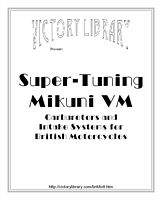
|
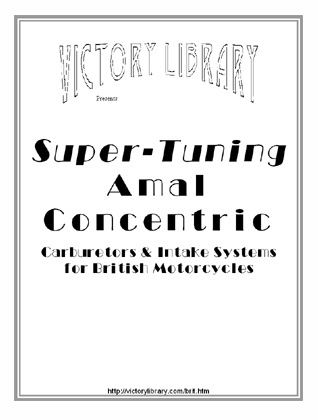
|
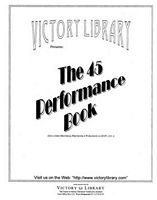
|
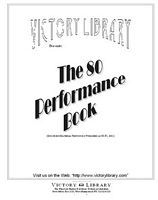
|
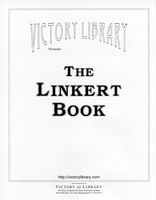
|
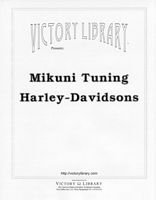
|
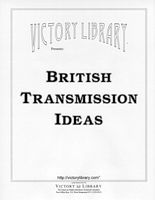
|
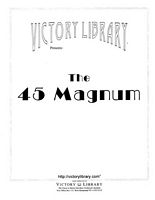
|
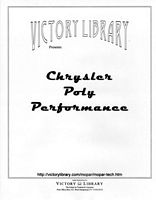
|
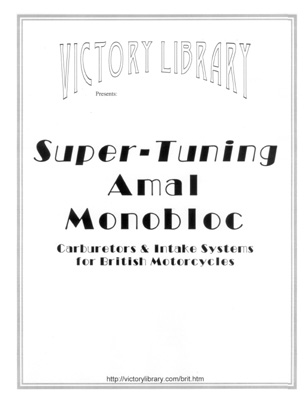
|
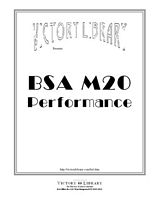
|
|
|





































